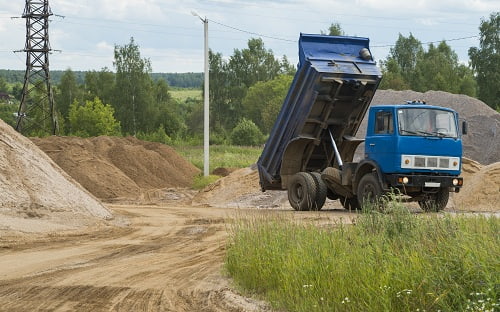Sand is one of the most commonly used ingredients in creating concrete for the construction of buildings and other structures. It works well for wall reinforcements, flooring, and roofing, as it provides a relatively high resistance, durability, and structural integrity.
However, it’s worth noting that there are several types of sand, and each type has different properties and benefits. One particular type that you’ve probably heard before is silica sand.
Silica sand is a material that combines quartz and a small amount of clay, coal, and other materials to form what’s best known as quartz sand. You may think that it’s no different from ‘regular sand,’ but in reality, it’s highly sought-after by building contractors. Here’s why:
-
Silica Sand Is Cheap
While searching for a silica sand supplier, you’ll find that most of them offer the material at a meagre price despite its high demand. This is mainly because you can find silica sand practically everywhere, especially since it’s made of the two most abundant elements in the world: oxygen and silicon. You can find it on beaches, deserts, and inside several types of rocks.
Of course, it’ll require a bit of processing to make silica sand actually usable for construction. But the fact that it’s abundant makes it cheaper than other types of sand, such as gypsum or river sand.

-
Other Types Are Often Chemically Reactive
Other types of sand, such as feldspathic sand and masonry sand, typically contain silica, so it’s very similar to silica sand. However, they only contain up to 95% of this element.
For example, sand often used for creating concrete contains 80% silicon dioxide at most. Apart from this element, it may also contain other minerals such as iron, potassium, and carbonate.
These trace elements, or what experts call ‘impurities,’ can make the sand chemically reactive. This would mean that it’s more susceptible to chemical reactions, which may lead to unpredictable outcomes. Since that would result in greater risks, it’s only natural for building contractors to choose silica sand over other types of sand.
-
Silica Sand Comes In Different Shapes, Sizes, And Properties
Apart from its advantage in stability over other types of construction sand, silica sand is inherently a diverse material. It can come in different particle shapes, grain sizes, and colors, making it perfect for those who aim to diversify their building projects. Different variants of silica sand may also differ in their properties, such as strength, durability, integrity, stability, and refractoriness.
Of course, that would mean that you’d have to carefully consider your choice of material supplier. Regardless of your needs, its diversity makes it one of the best materials for contractors.
-
Silica Sand Works Well For Water Filtration
If you’re familiar with water filtration systems, you’ve probably seen silica sand used as part of the mechanism. This is because some variants of silica sand have particles that are semi-round or round-shaped, which is the perfect shape for a water filtration medium. The shape makes it so the silica sand can easily capture solids and other impurities mixed in with water.
Furthermore, silicon dioxide is known to be incapable of degrading when exposed to acidic elements. In fact, silica can actually neutralize the acid to maintain the water’s optimal pH level.
These properties make silica sand the perfect material for water filtration, which is one of the crucial properties of a building in case of emergencies such as floods or plumbing problems.
-
Contractors Can Use It For Other Building Components
Lastly, apart from being a core material of construction concrete, silica sand can also serve as an ingredient for other building components. These may include the following:
- Glass Components: As you may already know, with due processing, sand can turn into glass. While it’s possible to turn regular sand into glass, the various properties of silica sand make it a more viable option. For instance, silica sand comes in different colors and strengths, as stated earlier, and these two properties are crucial for glassmaking.
- Coatings and Paints: You may also find building contractors using silica sand to create coatings and paint. The reason is the same as the previous example—silica sand comes in different colors, which is the main feature of paints. It’s also worth noting that silica sand improves a paint’s resistance to tint and dirt, making it an even more ideal material for building contractors.
- Ceramics: Lastly, silica sand can also serve as a core component for the glazing or glazier of ceramics like floor tiles, wall tiles, and tableware due to its durability.
Closing Thoughts
Silica sand is one of the most sought-after materials by building contractors. Not only is it aesthetically viable but it’s also practical due to its various properties. Of course, it has its downsides, but if you’re planning your next project, you should consider using silica sand for construction.




























